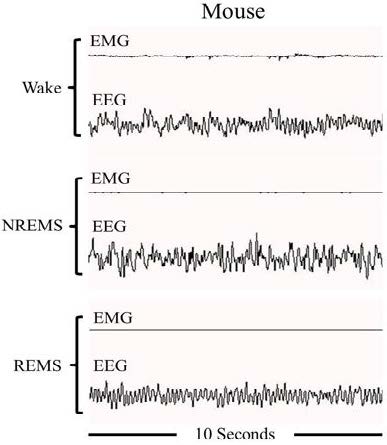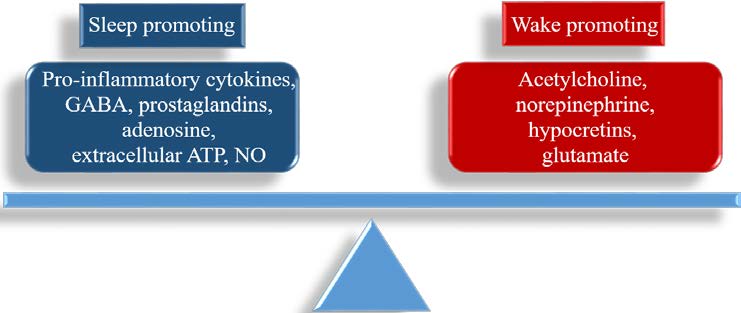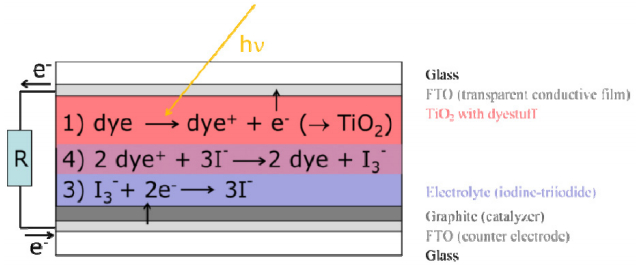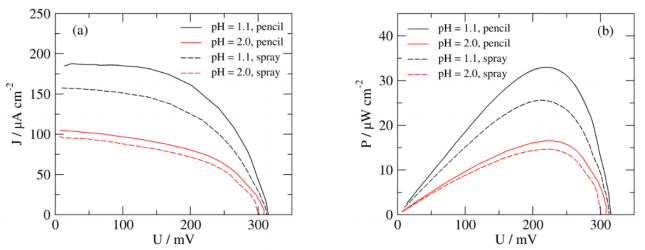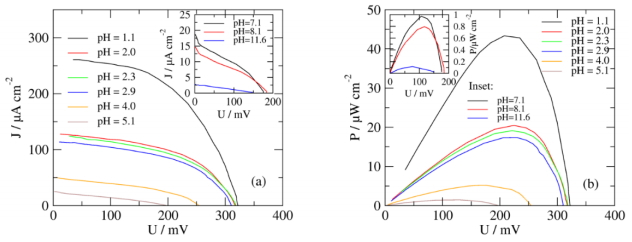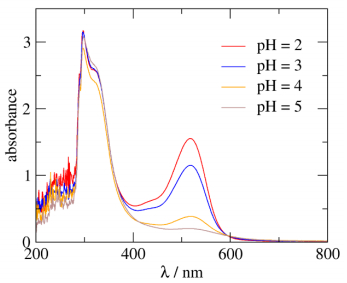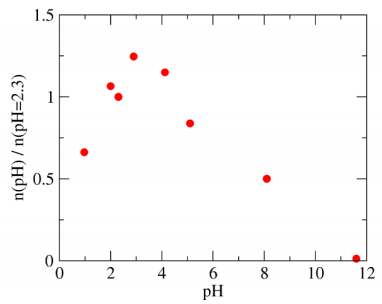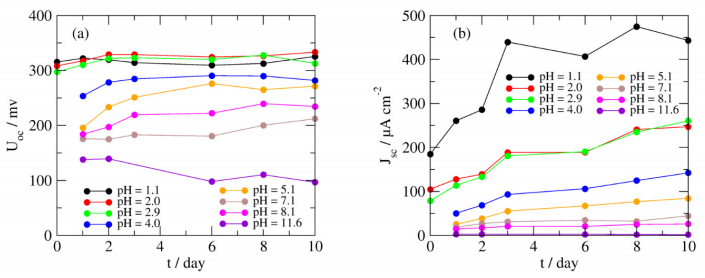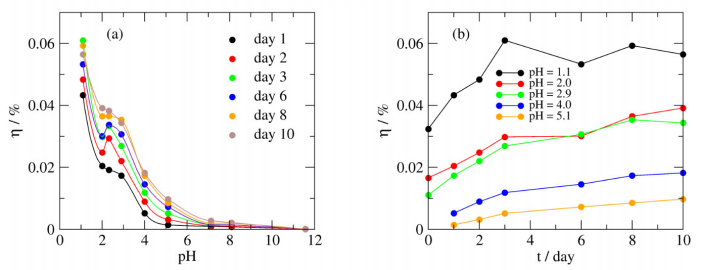| 1.
|
Cheng-Fang Yen, Huang-Chi Lin, Chih-Hung Ko, Hung-Chi Wu, Chih-Yao Hsu, Peng-Wei Wang,
Sleep quality among individuals with ketamine use and the mediating role of craving,
2020,
10,
2045-2322,
10.1038/s41598-020-77631-9
|
|
| 2.
|
Samuel Deurveilher, Tatjana Golovin, Shannon Hall, Kazue Semba,
Microglia dynamics in sleep/wake states and in response to sleep loss,
2021,
143,
01970186,
104944,
10.1016/j.neuint.2020.104944
|
|
| 3.
|
Ahmed M. Kabel, Amani M. Al Thumali, Khayriah A. Aldowiala, Raghad D. Habib, Shoroq S. Aljuaid,
Sleep disorders in a sample of students in Taif University, Saudi Arabia: The role of obesity, insulin resistance, anemia and high altitude,
2018,
12,
18714021,
549,
10.1016/j.dsx.2018.03.024
|
|
| 4.
|
Matthew A. Tucker,
2020,
Chapter 14,
978-3-030-30891-9,
203,
10.1007/978-3-030-30892-6_14
|
|
| 5.
|
Kristine A. Wilckens, Fabio Ferrarelli, Matthew P. Walker, Daniel J. Buysse,
Slow-Wave Activity Enhancement to Improve Cognition,
2018,
41,
01662236,
470,
10.1016/j.tins.2018.03.003
|
|
| 6.
|
Skand Shekhar, Janet E. Hall, Joanna Klubo-Gwiezdzinska,
The hypothalamic–pituitary–thyroid axis and sleep,
2021,
17,
24519650,
8,
10.1016/j.coemr.2020.10.002
|
|
| 7.
|
Oscar Lederman, Philip B. Ward, Joseph Firth, Christopher Maloney, Rebekah Carney, Davy Vancampfort, Brendon Stubbs, Megan Kalucy, Simon Rosenbaum,
Does exercise improve sleep quality in individuals with mental illness? A systematic review and meta-analysis,
2019,
109,
00223956,
96,
10.1016/j.jpsychires.2018.11.004
|
|
| 8.
|
Zhen-Xin Feng, Hui Dong, Wei-Min Qu, Wei Zhang,
Oral Delivered Dexmedetomidine Promotes and Consolidates Non-rapid Eye Movement Sleep via Sleep–Wake Regulation Systems in Mice,
2018,
9,
1663-9812,
10.3389/fphar.2018.01196
|
|
| 9.
|
Ingrid Poulsen, Leanne Langhorn, Ingrid Egerod, Lena Aadal,
Sleep and agitation during subacute traumatic brain injury rehabilitation: A scoping review,
2021,
34,
10367314,
76,
10.1016/j.aucc.2020.05.006
|
|
| 10.
|
Alexandra Vaccaro, Yosef Kaplan Dor, Keishi Nambara, Elizabeth A. Pollina, Cindy Lin, Michael E. Greenberg, Dragana Rogulja,
Sleep Loss Can Cause Death through Accumulation of Reactive Oxygen Species in the Gut,
2020,
181,
00928674,
1307,
10.1016/j.cell.2020.04.049
|
|
| 11.
|
Ahmed M. Kabel, Amani M. Al Thumali, Khayriah A. Aldowiala, Raghad D. Habib, Shoroq S. Aljuaid, Huda A. Alharthi,
Sleep disorders in adolescents and young adults: Insights into types, relationship to obesity and high altitude and possible lines of management,
2018,
12,
18714021,
777,
10.1016/j.dsx.2018.04.029
|
|
| 12.
|
Jennifer G. Hensley, Janet R. Beardsley,
Insomnia Treatment in the Primary Care Setting,
2020,
2,
2589420X,
125,
10.1016/j.yfpn.2020.01.012
|
|
| 13.
|
Olakunle J. Onaolapo, Adejoke Y. Onaolapo,
2020,
9780128166581,
265,
10.1016/B978-0-12-816658-1.00028-4
|
|
| 14.
|
Li-Tang Tsai, Eleanor Boyle, Jan C. Brønd, Gry Kock, Mathias Skjødt, Lars G. Hvid, Paolo Caserotti,
Associations between objectively measured physical activity, sedentary behaviour and time in bed among 75+ community-dwelling Danish older adults,
2021,
21,
1471-2318,
10.1186/s12877-020-01856-6
|
|
| 15.
|
Younggi Choi, Brian K. Raymer,
Sleep modulating agents,
2019,
29,
0960894X,
2025,
10.1016/j.bmcl.2019.06.043
|
|
| 16.
|
Vladimira Vuletic, Valentino Racki, Darko Chudy, Nenad Bogdanovic,
2020,
Chapter 8,
978-1-83880-291-2,
10.5772/intechopen.88430
|
|
| 17.
|
Zeying Lu, Shengwei Xu, Hao Wang, Juntao Liu, Yun Wang, Jingyu Xie, Yilin Song, Fei Gao, Yuchuan Dai, Lina Qu, Xinxia Cai,
2019,
Implantable Microelectrode Arrays for Electrophysiological Activity Detection in Cortex of Sleep Deprived Rats *
,
978-1-7281-2892-4,
491,
10.1109/NANO46743.2019.8993920
|
|
| 18.
|
Soo Min Son, Eun-Ju Park, Young Hye Cho, Sang Yeoup Lee, Jung-In Choi, Young-In Lee, Yun Jin Kim, Jeong Gyu Lee, Yu Hyeon Yi, Young Jin Tak, Hye Rim Hwang, Seung-Hun Lee, Ryuk Jun Kwon, Choongrak Kim,
Association Between Weekend Catch-Up Sleep and Metabolic Syndrome with Sleep Restriction in Korean Adults: A Cross-Sectional Study Using KNHANES ,
2020,
Volume 13,
1178-7007,
1465,
10.2147/DMSO.S247898
|
|
| 19.
|
Nuno Canha, Catarina Teixeira, Mónica Figueira, Carolina Correia,
How Is Indoor Air Quality during Sleep? A Review of Field Studies,
2021,
12,
2073-4433,
110,
10.3390/atmos12010110
|
|
| 20.
|
Nurcan KIRCA, Meryem ÖNGEN,
İNFERTİLİTE VE UYKU KALİTESİ ARASINDAKİ İLİŞKİ,
2020,
2667-7849,
10.38136/jgon.697603
|
|
| 21.
|
Sahil Bajaj, William D.S. Killgore,
Vulnerability to mood degradation during sleep deprivation is influenced by white-matter compactness of the triple-network model,
2019,
202,
10538119,
116123,
10.1016/j.neuroimage.2019.116123
|
|
| 22.
|
Priya E. Maharaj, Nicola Barclay, Christine Descartes, Hazel Da Breo,
2019,
Chapter 132-1,
978-3-319-62122-7,
1,
10.1007/978-3-319-62122-7_132-1
|
|
| 23.
|
Robert P. Vertes, Stephanie B. Linley,
No cognitive processing in the unconscious,
anesthetic‐like
, state of sleep
,
2021,
529,
0021-9967,
524,
10.1002/cne.24963
|
|
| 24.
|
Mark R. Zielinski, David M. Systrom, Noel R. Rose,
Fatigue, Sleep, and Autoimmune and Related Disorders,
2019,
10,
1664-3224,
10.3389/fimmu.2019.01827
|
|
| 25.
|
Mark R. Zielinski, Dmitry Gerashchenko,
Sleep-inducing effect of substance P-cholera toxin A subunit in mice,
2017,
659,
03043940,
44,
10.1016/j.neulet.2017.08.066
|
|
| 26.
|
Martin Groß, Bahareh Vedadinezhad, Nahid Hassanpour,
2020,
Chapter 3,
978-3-662-59013-3,
27,
10.1007/978-3-662-59014-0_3
|
|
| 27.
|
J. Levenga, D.J. Peterson, P. Cain, C.A. Hoeffer,
Sleep Behavior and EEG Oscillations in Aged Dp(16)1Yey/+ Mice: A Down Syndrome Model,
2018,
376,
03064522,
117,
10.1016/j.neuroscience.2018.02.009
|
|
| 28.
|
Christopher E. Kline, Charles H. Hillman, Bonny Bloodgood Sheppard, Bethany Tennant, David E. Conroy, Richard F. Macko, David X. Marquez, Steven J. Petruzzello, Kenneth E. Powell, Kirk I. Erickson,
Physical Activity and Sleep: An Updated Umbrella Review of the 2018 Physical Activity Guidelines Advisory Committee Report,
2021,
10870792,
101489,
10.1016/j.smrv.2021.101489
|
|
| 29.
|
B.N. Saguem, J. Nakhli, I. Romdhane, S.B. Nasr,
Predictors of sleep quality in medical students during COVID-19 confinement,
2021,
00137006,
10.1016/j.encep.2021.03.001
|
|
| 30.
|
Faezeh Moosavi-Movahedi, Reza Yousefi,
2021,
Chapter 10,
978-3-030-74325-3,
167,
10.1007/978-3-030-74326-0_10
|
|
| 31.
|
Omokehinde Olubunmi Fakorede, Peter Olutunde Onifade, Oluyinka Emmanuel Majekodunmi, Adegboyega Ogunwale, Adefunke Omosefe DadeMatthews,
Insomnia and quality of life of prisoners at a Nigerian maximum-security prison,
2021,
17,
1744-9200,
574,
10.1108/IJPH-12-2020-0097
|
|
| 32.
|
Charles Pinto, Kirti Yeshwant Tandel,
2022,
Chapter 27,
978-981-16-0122-4,
561,
10.1007/978-981-16-0123-1_27
|
|
| 33.
|
Teresa Paiva, Hugo Canas‐Simião,
Sleep and violence perpetration: A review of biological and environmental substrates,
2022,
31,
0962-1105,
10.1111/jsr.13547
|
|
| 34.
|
M. M. Kanarskii, J. Yu. Nekrasova, N. A. Kurova, I. V. Redkin,
Mechanisms of Circadian Rhythm Regulation in Humans,
2022,
48,
0362-1197,
328,
10.1134/S0362119722020098
|
|
| 35.
|
Tat-Kong Wong,
2022,
Chapter 1,
978-981-19-5790-1,
3,
10.1007/978-981-19-5791-8_1
|
|
| 36.
|
Katarína Kováčová, Katarína Stebelová,
Sleep Characteristics According to Gender and Age Measured by Wrist Actigraphy,
2021,
18,
1660-4601,
13213,
10.3390/ijerph182413213
|
|
| 37.
|
Eveline Van Looveren, Thomas Bilterys, Wouter Munneke, Barbara Cagnie, Kelly Ickmans, Olivier Mairesse, Anneleen Malfliet, Liesbet De Baets, Jo Nijs, Dorien Goubert, Lieven Danneels, Maarten Moens, Mira Meeus,
The Association between Sleep and Chronic Spinal Pain: A Systematic Review from the Last Decade,
2021,
10,
2077-0383,
3836,
10.3390/jcm10173836
|
|
| 38.
|
Wenhua Li, Yinlong Cheng, Yi Zhang, Yazhi Qian, Mo Wu, Wei Huang, Nan Yang, Yanyong Liu,
Shumian Capsule Improves the Sleep Disorder and Mental Symptoms Through Melatonin Receptors in Sleep-Deprived Mice,
2022,
13,
1663-9812,
10.3389/fphar.2022.925828
|
|
| 39.
|
Divya Kanchibhotla, Sheel Galada Parekh, Prateek Harsora, Shashank Kulkarni,
The Influence of Sudarshan Kriya Yoga on Sleep Quality in Indian Adults: An Open Trial Pilot Study,
2021,
5,
2510-2265,
213,
10.1007/s41782-021-00146-4
|
|
| 40.
|
Bing Dang, John Dicarlo, Stanislav Lukashov, Nigel Hinds, Jenna Reinen, Bo Wen, Tian Hao, Erhan Bilal, Jeff Rogers,
2021,
Development of a Smart Sleep Mask with Multiple Sensors,
978-1-7281-1179-7,
7058,
10.1109/EMBC46164.2021.9630086
|
|
| 41.
|
I-Chen Li, Ting-Wei Lin, Tung-Yen Lee, Yun Lo, Yih-Min Jiang, Yu-Hsuan Kuo, Chin-Chu Chen, Fang-Chia Chang,
Oral Administration of Armillaria mellea Mycelia Promotes Non-Rapid Eye Movement and Rapid Eye Movement Sleep in Rats,
2021,
7,
2309-608X,
371,
10.3390/jof7050371
|
|
| 42.
|
GoEun Han, Sumire Matsumoto, Javier Diaz, Robert W. Greene, Kaspar E. Vogt,
Dihydropyridine calcium blockers do not interfere with non-rapid eye movement sleep,
2022,
16,
1662-453X,
10.3389/fnins.2022.969712
|
|
| 43.
|
Tesfaye Segon, Habtamu Kerebih, Fanuel Gashawu, Bizuneh Tesfaye, Girum Nakie, Tamrat Anbesaw,
Sleep quality and associated factors among nurses working at comprehensive specialized hospitals in Northwest, Ethiopia,
2022,
13,
1664-0640,
10.3389/fpsyt.2022.931588
|
|
| 44.
|
Mark R. Zielinski, Allison J. Gibbons,
2023,
9780323910941,
258,
10.1016/B978-0-12-822963-7.00312-1
|
|
| 45.
|
Harsha Pattnaik, Mikael Mir, Sydney Boike, Rahul Kashyap, Syed Anjum Khan, Salim Surani,
Nutritional Elements in Sleep,
2022,
2168-8184,
10.7759/cureus.32803
|
|
| 46.
|
Mihail Kanarskii, Julia Yu. Nekrasova, Irina Vorob'eva, Il'ya Borisov,
CIRCADIAN RHYTHM AND CHRONIC DISORDERS OF CONSCIOUSNESS,
2021,
2658-6843,
10.36425/rehab63225
|
|
| 47.
|
Simon Ruch, Flavio Jean Schmidig, Leona Knüsel, Katharina Henke,
Closed-loop modulation of local slow oscillations in human NREM sleep,
2022,
264,
10538119,
119682,
10.1016/j.neuroimage.2022.119682
|
|
| 48.
|
Nicole Sanford, Ruiyang Ge, Mathilde Antoniades, Amirhossein Modabbernia, Shalaila S. Haas, Heather C. Whalley, Liisa Galea, Sebastian G. Popescu, James H. Cole, Sophia Frangou,
Sex differences in predictors and regional patterns of brain age gap estimates,
2022,
43,
1065-9471,
4689,
10.1002/hbm.25983
|
|
| 49.
|
Larisa Fabres, Pedro Moya,
Sueño: conceptos generales y su relación con la calidad de vida,
2021,
32,
07168640,
527,
10.1016/j.rmclc.2021.09.001
|
|
| 50.
|
Shashikant Patel, Vincy Vijay, Arvind Kumar, Sumana Chakravarty,
2023,
Chapter 17,
978-3-031-22467-6,
363,
10.1007/978-3-031-22468-3_17
|
|
| 51.
|
Steven N. Buchert, Pomai Murakami, Aashaka H. Kalavadia, Martin T. Reyes, Divya Sitaraman,
Sleep correlates with behavioral decision making critical for reproductive output in Drosophila melanogaster,
2022,
264,
10956433,
111114,
10.1016/j.cbpa.2021.111114
|
|
| 52.
|
Ariel A. Tamayo Quito, Alba Del Pilar Vargas Espin,
Satisfacción Sexual y Calidad del Sueño en Estudiantes Universitarios,
2023,
4,
2789-3855,
534,
10.56712/latam.v4i1.271
|
|
| 53.
|
Shivam Bhola, Jhillika Trisal, Vikram Thakur, Parneet Kaur, Saurabh Kulshrestha, Shashi Kant Bhatia, Pradeep Kumar,
Neurological toll of COVID-19,
2022,
43,
1590-1874,
2171,
10.1007/s10072-022-05875-6
|
|
| 54.
|
Heather A. Bruce, Peter Kochunov, Mark D. Kvarta, Eric L. Goldwaser, Joshua Chiappelli, Adina Schwartz, Samantha Lightner, Jane Endres, Alexa Yuen, Yizhou Ma, Andrew Van der vaart, Kathryn S. Hatch, Si Gao, Zhenyao Ye, Qiong Wu, Shuo Chen, Braxton D. Mitchell, L. Elliot Hong,
Frontal white matter association with sleep quality and the role of stress,
2023,
32,
0962-1105,
10.1111/jsr.13669
|
|
| 55.
|
Andy Yiu-Chau Tam, Li-Wen Zha, Bryan Pak-Hei So, Derek Ka-Hei Lai, Ye-Jiao Mao, Hyo-Jung Lim, Duo Wai-Chi Wong, James Chung-Wai Cheung,
Depth-Camera-Based Under-Blanket Sleep Posture Classification Using Anatomical Landmark-Guided Deep Learning Model,
2022,
19,
1660-4601,
13491,
10.3390/ijerph192013491
|
|
| 56.
|
Teng Wang, Xingran Wang, Yanfei Tian, Wei Gang, Xiaoli Li, Jiaqing Yan, Yi Yuan,
Modulation effect of low-intensity transcranial ultrasound stimulation on REM and NREM sleep,
2022,
1047-3211,
10.1093/cercor/bhac413
|
|
| 57.
|
O. Hecmarie Meléndez-Fernández, Jennifer A. Liu, Randy J. Nelson,
Circadian Rhythms Disrupted by Light at Night and Mistimed Food Intake Alter Hormonal Rhythms and Metabolism,
2023,
24,
1422-0067,
3392,
10.3390/ijms24043392
|
|
| 58.
|
Jeri Sasser, Assaf Oshri,
In or out of sync? Concordance between parent and adolescent sleep varies by family context,
2023,
1050-8392,
10.1111/jora.12842
|
|
| 59.
|
Yuyang Wang, Yoichi Minami, Koji L. Ode, Hiroki R. Ueda,
The role of calcium and CaMKII in sleep,
2022,
16,
1662-5137,
10.3389/fnsys.2022.1059421
|
|
| 60.
|
Alemayehu Wondie, Mitku Mammo Taderegew, Betemariam Girma, Atsede Getawey, Daniel Tsega, Tamene Fetene Terefe, Shimelis Mitiku, Hiwot Berhanu,
Obstructive sleep apnea risk and its associated factors among type 2 diabetes mellitus patients at wolkite university specialized hospital, Wolkite, Southern Ethiopia, 2021. A comparative cross-sectional study,
2022,
14,
1758-5996,
10.1186/s13098-022-00931-9
|
|
| 61.
|
Xing Yee Jolyn Tan, Shanise Yi Xin Choong, Ling Jie Cheng, Ying Lau,
Relaxation interventions for improving sleep outcomes in perinatal women: A systematic review and meta-analysis of randomized controlled trials,
2021,
103,
02666138,
103151,
10.1016/j.midw.2021.103151
|
|
| 62.
|
Pankaj Hans, Uttam Paul, Shatavisa Mukherjee, Nikhil Era, Ritika Singh, Susanta Bordoloi,
Sleep Quality in the Admitted Elderly: A Prospective Observational Study in Eastern India,
2022,
9,
2582-1202,
30,
10.5005/jp-journals-10070-7085
|
|
| 63.
|
Simon Hartmann, Raffaele Ferri, Oliviero Bruni, Mathias Baumert,
Causality of cortical and cardiovascular activity during cyclic alternating pattern in non-rapid eye movement sleep,
2021,
379,
1364-503X,
10.1098/rsta.2020.0248
|
|
| 64.
|
Negin Badihian, Shervin Badihian, Parnian Poursafa, Roya Kelishadi,
2022,
Chapter 8,
978-3-030-85356-3,
157,
10.1007/978-3-030-85357-0_8
|
|
| 65.
|
Michal Lew-Starowicz,
Sexuality and Sleep Disorders,
2022,
19,
1743-6109,
890,
10.1016/j.jsxm.2022.02.011
|
|
| 66.
|
Byung Wook Song, Hye-Jin Jeong, Bo Young Kim, Yong Won Cho, Chang-Nam Son, Sung-Soo Kim, Sang-Hyon Kim,
Bath Ankylosing Spondylitis Disease Activity Index is Associated With the Quality of Sleep in Ankylosing Spondylitis Patients,
2021,
28,
2093-940X,
143,
10.4078/jrd.2021.28.3.143
|
|
| 67.
|
Adam Bode, Liisa Kuula,
Romantic Love and Sleep Variations: Potential Proximate Mechanisms and Evolutionary Functions,
2021,
10,
2079-7737,
923,
10.3390/biology10090923
|
|
| 68.
|
Mark R. Zielinski, Allison J. Gibbons,
Neuroinflammation, Sleep, and Circadian Rhythms,
2022,
12,
2235-2988,
10.3389/fcimb.2022.853096
|
|
| 69.
|
SLEEP QUALITY AND SLEEP DISTURBING FACTORS AMONG NURSES IN A SELECTED HOSPITAL IN COLOMBO, SRI LANKA,
2022,
27192369,
98,
10.37966/ijkiu2022032029
|
|
| 70.
|
Endurance O Evbayekha, Henry O Aiwuyo, Arthur Dilibe, Bede N Nriagu, Abiodun B Idowu, Ruth Y Eletta, Evidence E Ohikhuai,
Sleep Deprivation Is Associated With Increased Risk for Hypertensive Heart Disease: A Nationwide Population-Based Cohort Study,
2022,
2168-8184,
10.7759/cureus.33005
|
|
| 71.
|
Kala P. Nair, Raghava Jagadeesh Salaka, Bettadapura N. Srikumar, Bindu M. Kutty, Byrathnahalli S. Shankaranarayana Rao,
Enriched Environment Rescues Impaired Sleep–Wake Architecture and Abnormal Neural Dynamics in Chronic Epileptic Rats,
2022,
495,
03064522,
97,
10.1016/j.neuroscience.2022.05.024
|
|
| 72.
|
Nina C. M. Schmitz, Ysbrand D. van der Werf, Heidi M. Lammers-van der Holst,
The Importance of Sleep and Circadian Rhythms for Vaccination Success and Susceptibility to Viral Infections,
2022,
4,
2624-5175,
66,
10.3390/clockssleep4010008
|
|
| 73.
|
Ying Ni Lin, Zhuo Ran Liu, Shi Qi Li, Chuan Xiang Li, Liu Zhang, Ning Li, Xian Wen Sun, Hong Peng Li, Jian Ping Zhou, Qing Yun Li,
Burden of Sleep Disturbance During COVID-19 Pandemic: A Systematic Review,
2021,
Volume 13,
1179-1608,
933,
10.2147/NSS.S312037
|
|
| 74.
|
Emmanuel Frimpong, Melodee Mograss, Tehila Zvionow, Thien Thanh Dang-Vu,
The effects of evening high-intensity exercise on sleep in healthy adults: A systematic review and meta-analysis,
2021,
60,
10870792,
101535,
10.1016/j.smrv.2021.101535
|
|
| 75.
|
Özge ESGİN, Ayşe Özfer ÖZÇELİK,
Does Beverage Consumption Affect Sleep Quality?,
2022,
2619-9041,
10.19127/bshealthscience.1033337
|
|
| 76.
|
Bridgette A. Moffitt, Sara M. Sarasua, Linda Ward, Diana Ivankovic, Kathleen Valentine, Curtis Rogers, Katy Phelan, Luigi Boccuto,
Sleep and
Phelan–McDermid
Syndrome: Lessons from the International Registry and the scientific literature
,
2022,
10,
2324-9269,
10.1002/mgg3.2035
|
|
| 77.
|
Adam R. Kinney, Xiang-Dong Yan, Alexandra L. Schneider, Samuel King, Jeri E. Forster, Nazanin Bahraini, Lisa A. Brenner,
Post-concussive symptoms mediate the relationship between sleep problems and participation restrictions among veterans with mild traumatic brain injury,
2022,
3,
2673-6861,
10.3389/fresc.2022.964420
|
|
| 78.
|
Olivia J. Veatch, Beth A. Malow, Hye-Seung Lee, Aryn Knight, Judy O. Barrish, Jeffrey L. Neul, Jane B. Lane, Steven A. Skinner, Walter E. Kaufmann, Jennifer L. Miller, Daniel J. Driscoll, Lynne M. Bird, Merlin G. Butler, Elisabeth M. Dykens, June-Anne Gold, Virginia Kimonis, Carlos A. Bacino, Wen-Hann Tan, Sanjeev V. Kothare, Sarika U. Peters, Alan K. Percy, Daniel G. Glaze,
Evaluating Sleep Disturbances in Children With Rare Genetic Neurodevelopmental Syndromes,
2021,
123,
08878994,
30,
10.1016/j.pediatrneurol.2021.07.009
|
|
| 79.
|
Edem Ekpenyong Edem, Uyi Emmanuel Okhonmina, Kate Eberechukwu Nebo, Elizabeth Toyin Akinluyi, Daniel Akinwale Ikuelogbon, Adedamola Adediran Fafure, Ayodeji Augustine Olabiyi, Mujeeb Adekunle Adedokun,
Combined Exposure to Chronic Sleep Deprivation and Caffeine Potentiates Behavioural Deficits by Altering Neurochemical Profile and Synaptophysin Expression in Long-Evans Rats,
2022,
40,
1029-8428,
2001,
10.1007/s12640-022-00589-1
|
|
| 80.
|
Jenna A. Chiang, Paulina T. Feghali, Anita Saavedra, Ashley M. Whitaker,
Effects of sleep disturbance on neuropsychological functioning in patients with pediatric brain tumor,
2022,
157,
0167-594X,
129,
10.1007/s11060-022-03954-4
|
|
| 81.
|
Zachary J. Kunicki, Rachel Frietchen, John E. McGeary, Lan Jiang, Matthew S. Duprey, Thomas Bayer, Mriganka Singh, Jennifer M. Primack, Catherine M. Kelso, Wen-Chih Wu, James L. Rudolph, Melanie L. Bozzay,
Prevalence of Comorbid Depression and Insomnia Among Veterans Hospitalized for Heart Failure with Alzheimer Disease and Related Disorders,
2023,
10647481,
10.1016/j.jagp.2023.01.026
|
|
| 82.
|
Partha Haldar, Kameshwar Prasad, Shashi Kant, Sada Nand Dwivedi, Deepti Vibha, Awadh Kishor Pandit, Achal Kumar Srivastava, Amit Kumar, M Arfan Ikram, Tiemeier Henning,
Metabolic risk factors and psychosocial problems independently explain poor sleep quality and obstructive sleep apnea symptoms among adults in urban India,
2022,
1520-9512,
10.1007/s11325-022-02725-9
|
|
| 83.
|
Peiseah Teo, Belinda A Henry, Lisa J Moran, Stephanie Cowan, Christie Bennett,
The role of sleep in PCOS: what we know and what to consider in the future,
2022,
17,
1744-6651,
305,
10.1080/17446651.2022.2082941
|
|
| 84.
|
Hakseung Kim, Hee Ra Jung, Jung Bin Kim, Dong-Joo Kim,
Autonomic Dysfunction in Sleep Disorders: From Neurobiological Basis to Potential Therapeutic Approaches,
2022,
18,
1738-6586,
140,
10.3988/jcn.2022.18.2.140
|
|
| 85.
|
Divya Kanchibhotla, Sheel Galada Parekh, Prateek Harsora, Shashank Kulkarni,
Improvements in Sleep Quality and Duration Following a Meditation Retreat: an Open-Trial Pilot Study,
2021,
5,
2510-2265,
275,
10.1007/s41782-021-00162-4
|
|
| 86.
|
Priya E. Maharaj, Nicola Barclay, Christine Descartes, Hazel Da Breo,
2022,
Chapter 132,
978-3-319-89998-5,
3149,
10.1007/978-3-319-89999-2_132
|
|
| 87.
|
Sanung Eom, Shinhui Lee, Jiwon Lee, Sung-Oh Sohn, Junho H. Lee, Jaeman Park,
A Combination of Rosa Multiflora and Zizyphus Jujuba Enhance Sleep Quality in Anesthesia-Induced Mice,
2022,
23,
1422-0067,
14177,
10.3390/ijms232214177
|
|
| 88.
|
Taizo Kawano, Mitsuaki Kashiwagi, Mika Kanuka, Chung-Kuan Chen, Shinnosuke Yasugaki, Sena Hatori, Shinichi Miyazaki, Kaeko Tanaka, Hidetoshi Fujita, Toshiro Nakajima, Masashi Yanagisawa, Yoshimi Nakagawa, Yu Hayashi,
ER proteostasis regulators cell-non-autonomously control sleep,
2023,
42,
22111247,
112267,
10.1016/j.celrep.2023.112267
|
|
| 89.
|
Lisa C. Lyons, Yann Vanrobaeys, Ted Abel,
Sleep and memory: The impact of sleep deprivation on transcription, translational control, and protein synthesis in the brain,
2023,
0022-3042,
10.1111/jnc.15787
|
|
| 90.
|
Maria Mazzitelli, Mattia Trunfio, Ana Milinkovic, Eleonora Castelli, Lolita Sasset, Davide Leoni, Margherita Salvucci, Riccardo Cazzaro, Ilaria Calcinoni, Pietro Balducci, Gustavo Coelho Quirino Ribeiro, Giacomo Filagrana, Vincenzo Scaglione, Anna M. Cattelan,
Sleep disturbances and their correlation with cardiovascular risk, obesity, and mood disorders in people with HIV,
2023,
37,
0269-9370,
925,
10.1097/QAD.0000000000003493
|
|
| 91.
|
Nicholas R Gessner, Morteza Peiravi, Fan Zhang, Shemsiya Yimam, Danielle Springer, Susan T Harbison,
A conserved role for frizzled in sleep architecture,
2023,
4,
2632-5012,
10.1093/sleepadvances/zpad045
|
|
| 92.
|
Alexander Victor Anand David, Subramani Parasuraman, Evelyn Jerusha Edward,
Role of Antioxidants in Sleep Disorders: A Review,
2023,
14,
0976-500X,
253,
10.1177/0976500X241229835
|
|
| 93.
|
Ludovica Pasca, Carlo Alberto Quaranta, Serena Grumi, Martina Paola Zanaboni, Anna Tagliabue, Monica Guglielmetti, Helene Vitali, Elena Capriglia, Costanza Varesio, Federico Toni, Lino Nobili, Michele Terzaghi, Valentina De Giorgis,
The effects of ketogenic dietary therapies on sleep: A scoping review,
2024,
33,
0962-1105,
10.1111/jsr.14073
|
|
| 94.
|
Cindy François, Isabelle Bonafé, Maria Clotilde Carra, Caroline Bertrand, Jean‐Arthur Micoulaud‐Franchi, Emmanuel d'Incau,
Dental sleep medicine education among undergraduate dental students in France,
2024,
28,
1396-5883,
148,
10.1111/eje.12931
|
|
| 95.
|
Cindy R. Hu, Grete E. Wilt, Charlotte Roscoe, Hari S. Iyer, William H. Kessler, Francine Laden, Jorge E. Chavarro, Brent Coull, Susan Redline, Peter James, Jaime E. Hart,
Associations of seasonally available global positioning systems-derived walkability and objectively measured sleep in the Nurses’ Health Study 3 Mobile Health Substudy,
2024,
8,
2474-7882,
e348,
10.1097/EE9.0000000000000348
|
|
| 96.
|
Andrea Cecilia Toscanini, Rosa Hasan,
2024,
Chapter 2,
978-3-031-50709-0,
9,
10.1007/978-3-031-50710-6_2
|
|
| 97.
|
Dênia Alves de Azevedo, Maria Aparecida Turci , Guilherme Castelo Branco Rocha Silva, Hugo Cesar Piva, Gustavo Túlio Silveira Sousa, Alexandre Sampaio Moura,
Association between nonprescription use of nootropics and sleep quality in medical students,
2023,
33,
1980-6108,
e43759,
10.15448/1980-6108.2023.1.43759
|
|
| 98.
|
Büşra Dikdere, Kutlu Kağan Türkarslan,
Partner Phubbing and Sleep Quality: Serial Mediation Models With Relationship Satisfaction and Perceived Stress,
2024,
0033-2941,
10.1177/00332941241283759
|
|
| 99.
|
Dilay Açıl, Ayşe Nil Ceylan, Güliz Oruç,
SAĞLIK ALANINDA LİSANS EĞİTİMİ ALAN ÖĞRENCİLERİN UYKU KALİTESİ İLE ETKİLEYEN FAKTÖRLERİN BELİRLENMESİ,
2024,
9,
2791-9722,
75,
10.47115/jshs.1381964
|
|
| 100.
|
Alexey Brazhe, Andrey Verisokin, Darya Verveyko, Dmitry Postnov,
Astrocytes: new evidence, new models, new roles,
2023,
15,
1867-2450,
1303,
10.1007/s12551-023-01145-7
|
|
| 101.
|
Hathaipohn Tangwijitsakul, Narueporn Likhitweerawong, Nonglak Boonchooduang, Weerasak Chonchaiya, Orawan Louthrenoo,
Sleep problems and executive dysfunctions in pre‐school children,
2024,
60,
1034-4810,
703,
10.1111/jpc.16662
|
|
| 102.
|
Thang Phan, Ha Phan Ai Nguyen, Cao Khoa Dang, Minh Tri Phan, Vu Thanh Nguyen, Van Tuan Le, Binh Thang Tran, Chinh Van Dang, Tinh Huu Ho, Minh Tu Nguyen, Thang Van Dinh, Van Trong Phan, Binh Thai Dang, Huynh Ho Ngoc Quynh, Minh Tran Le, Nhan Phuc Thanh Nguyen,
Sleep Quality and Poor Sleep-related Factors Among Healthcare Workers During the COVID-19 Pandemic in Vietnam,
2023,
56,
1975-8375,
319,
10.3961/jpmph.22.528
|
|
| 103.
|
Deniz Bulgur, Raquel Macedo Moura, Julie C. Ribot,
Key actors in neuropathophysiology: The role of γδ T cells,
2024,
0014-2980,
10.1002/eji.202451055
|
|
| 104.
|
Habibolah Khazaie, Farzin Rezaei, Ali Zakiei, Behrooz Faridmarandi, Saeid Komasi,
How are poor sleepers with other clinical conditions affected by maladaptive personality traits? A neural network-based analysis,
2024,
15,
1664-0640,
10.3389/fpsyt.2024.1392525
|
|
| 105.
|
Danielle A. Wallace, Jayden Pace Gallagher, Shenita R. Peterson, Seyni Ndiaye-Gueye, Kathleen Fox, Susan Redline, Dayna A. Johnson,
Is exposure to chemical pollutants associated with sleep outcomes? A systematic review,
2023,
70,
10870792,
101805,
10.1016/j.smrv.2023.101805
|
|
| 106.
|
Clarinda Nataria Sutanto, Xuejuan Xia, Chin Wee Heng, Yue Shuian Tan, Delia Pei Shan Lee, Johnson Fam, Jung Eun Kim,
The impact of 5-hydroxytryptophan supplementation on sleep quality and gut microbiota composition in older adults: A randomized controlled trial,
2024,
43,
02615614,
593,
10.1016/j.clnu.2024.01.010
|
|
| 107.
|
Eleni Skourti, Panagiotis Simos, Alexandros Zampetakis, Eirini Koutentaki, Ioannis Zaganas, Christina Alexopoulou, Alexandros Vgontzas, Maria Basta,
Long-term associations between objective sleep quality and quantity and verbal memory performance in normal cognition and mild cognitive impairment,
2023,
17,
1662-453X,
10.3389/fnins.2023.1265016
|
|
| 108.
|
Chotiman Chinvararak, Trudie Chalder,
Prevalence of sleep disturbances in patients with long COVID assessed by standardised questionnaires and diagnostic criteria: A systematic review and meta-analysis,
2023,
175,
00223999,
111535,
10.1016/j.jpsychores.2023.111535
|
|
| 109.
|
Molly J. Sullan, Adam R. Kinney, Kelly A. Stearns-Yoder, Daniel J. Reis, Emerald G. Saldyt, Jeri E. Forster, Chelsea M. Cogan, Nazanin H. Bahraini, Lisa A. Brenner,
A randomized clinical trial for a self-guided sleep intervention following moderate-severe traumatic brain injury: Study protocol,
2024,
141,
15517144,
107525,
10.1016/j.cct.2024.107525
|
|
| 110.
|
Mark R. Zielinski, Allison J. Gibbons,
2023,
9780323858410,
151,
10.1016/B978-0-323-85841-0.00003-1
|
|
| 111.
|
Andreea Sălcudean, Andreea-Bianca Sasu, Roland-Felix Kollar, Elena‑Gabriela Strete, Oana Neda-Stepan, Virgil ENĂTESCU,
Reţelele de socializare – factori de risc pentru tulburările de somn în rândul persoanelor tinere,
2024,
1,
1841-4877,
21,
10.26416/Psih.76.1.2024.9466
|
|
| 112.
|
L. Bond, D. McTiernan, M. Connaughton, E. A. Heron, A. N. Coogan, J. McGrath,
Sleep problems in children and adolescents in an attention deficit hyperactivity disorder service,
2023,
0790-9667,
1,
10.1017/ipm.2023.41
|
|
| 113.
|
Carly Grant, Michael Woodbury, Marie Skougaard, Jens K. Boldsen, Alexis Ogdie, Elizabeth B. Klerman, Joseph F. Merola, Lourdes M. Perez-Chada,
Sleep Problems in Patients With Psoriatic Arthritis: A Systematic Literature Review and Metaanalysis,
2023,
50,
0315-162X,
1594,
10.3899/jrheum.2022-1169
|
|
| 114.
|
Heather Katherine Scott-Marshall,
Safe limits on work hours for the nursing profession: a rapid evidence review,
2024,
5,
2673-5059,
10.3389/fgwh.2024.1455422
|
|
| 115.
|
Buket Şen, Nurcan Erdoğan Kurtaran, Levent Öztürk,
The effect of 24-hour sleep deprivation on subjective time perception,
2023,
192,
01678760,
91,
10.1016/j.ijpsycho.2023.08.011
|
|
| 116.
|
María Dolores Hinchado, Eduardo Otero, Isabel Gálvez, Leticia Martín-Cordero, María del Carmen Navarro, Eduardo Ortega,
Subjective Sleep Quality Versus Objective Accelerometric Measures of Sleep and Systemic Concentrations of Sleep-Related Hormones as Objective Biomarkers in Fibromyalgia Patients,
2023,
11,
2227-9059,
1980,
10.3390/biomedicines11071980
|
|
| 117.
|
Hung-Hsin Huang, Brendon Stubbs, Li-Jung Chen, Po-Wen Ku, Tai-Yi Hsu, Chia-Wei Lin, Yi-Ming Weng, Shih-Hao Wu,
The effect of physical activity on sleep disturbance in various populations: a scoping review of randomized clinical trials,
2023,
20,
1479-5868,
10.1186/s12966-023-01449-7
|
|
| 118.
|
Worku Chekol Tassew, Samson Sisay Woldie, Yeshiwas Ayale Ferede, Agerie Mengistie Zeleke,
Obstructive sleep apnea risk and associated factors among patients with type 2 diabetes mellitus in Africa: systematic review and meta-analysis,
2024,
8,
2398-2683,
10.1186/s41606-024-00112-9
|
|
| 119.
|
Najim Z. Alshahrani, Abdullah M. Alarifi, Wejdan Saqer Alotaibi, Afnan Abdulrahman Alsayed, Khalid Sultan Latif Alwasm, Alaa Abdulkarim Alhunti, Lana Alaa AlDahleh, Meaad Mohammed A Alshahrani, Abdalrhman M. Albeshry, Mohammed A. Aljunaid,
Prevalence and Correlates of Poor Sleep Quality Among Psychiatry Physicians in Saudi Arabia: A Cross‐Sectional Study,
2024,
7,
2398-8835,
10.1002/hsr2.70170
|
|
| 120.
|
Sergio Garbarino, Nicola Luigi Bragazzi, Egeria Scoditti,
2023,
Chapter 1,
978-981-99-0239-2,
1,
10.1007/978-981-99-0240-8_1
|
|
| 121.
|
Mathieu Nollet, Nicholas P. Franks, William Wisden, Jenny Morton,
Understanding Sleep Regulation in Normal and Pathological Conditions, and Why It Matters,
2023,
12,
18796397,
105,
10.3233/JHD-230564
|
|
| 122.
|
Magdalena Albrecht-Bisset, Dan Wang, Krystle Martin, Pierre Côté, Efrosini A. Papaconstantinou,
A cross-sectional study of the association between sleep quality and anxiety in postsecondary students in Ontario,
2023,
3,
26673436,
100062,
10.1016/j.sleepe.2023.100062
|
|
| 123.
|
T. Muhammad, Soomi Lee, Manacy Pai, Bittu Mandal,
Association between sleep quality, sleep duration, and physical frailty among adults aged 50 years and older in India,
2024,
24,
1471-2458,
10.1186/s12889-024-20606-6
|
|
| 124.
|
Jiyoung Lim, Hyundong Lee, Jae Bum Park, Kyung-Jong Lee, Inchul Jeong, Jaehyuk Jung,
Combined effect of work from home and work during nonwork time on sleep disturbance,
2023,
35,
2052-4374,
10.35371/aoem.2023.35.e28
|
|
| 125.
|
Ramalingam Vetrivelan, Sathyajit Sai Bandaru,
Neural Control of REM Sleep and Motor Atonia: Current Perspectives,
2023,
23,
1528-4042,
907,
10.1007/s11910-023-01322-x
|
|
| 126.
|
Joykishan Sharma Hanjabam, Oinam Sangita Devi, Awaiga Collins, Lutrika Moirangthem, Nidhi Brahmacharimayum, Maharabam Anandi Devi, Khuraijam Mrinalini Devi,
Analysis of Molecular Circuitry Integrated to Lethargus State of Caenorhabditis elegans: A Review,
2024,
77,
0373-5893,
155,
10.1007/s12595-024-00524-6
|
|
| 127.
|
Elizabeth B. Brown, Jiwei Zhang, Evan Lloyd, Elizabeth Lanzon, Valentina Botero, Seth Tomchik, Alex C. Keene, Gregory S. Barsh,
Neurofibromin 1 mediates sleep depth in Drosophila,
2023,
19,
1553-7404,
e1011049,
10.1371/journal.pgen.1011049
|
|
| 128.
|
Maciej Pokarowski, Michal Kedra, Justyna Piwinska, Katarzyna Kurek, Karolina Szczygiel, Piotr Denysiuk, Joanna Popiolek-Kalisz,
The Relationship between Knowledge, Dietary Supplementation, and Sleep Quality in Young Adults after the COVID-19 Pandemic,
2023,
15,
2072-6643,
3354,
10.3390/nu15153354
|
|
| 129.
|
Nathan E. Howarth, Michelle A. Miller,
Sleep, Sleep Disorders, and Mental Health: A Narrative Review,
2024,
8,
2468-6476,
146,
10.4103/hm.HM-D-24-00030
|
|
| 130.
|
Patrick Vizeli, Bruna Cuccurazzu, Sean P.A. Drummond, Dean T. Acheson, Victoria B. Risbrough,
Effects of total sleep deprivation on sensorimotor gating in humans,
2023,
449,
01664328,
114487,
10.1016/j.bbr.2023.114487
|
|
| 131.
|
Qian Lv, Wenguang Zhou, Yue Kong, Silu Chen, Baoling Xu, Fangfang Zhu, Xianying Shen, Zhaojun Qiu,
Influencing factors of sleep disorders and sleep quality in healthcare workers during the COVID‐19 pandemic: A systematic review and meta‐analysis,
2023,
10,
2054-1058,
5887,
10.1002/nop2.1871
|
|
| 132.
|
Chao Guo, Zhuoma Basang, Quzong Deji, Yishu Zhu, Yan Yan, Pixin Gong, Li Lan,
The effects of bedroom microclimate regulation behaviors on sleep quality: A field study on the Qinghai-Tibetan Plateau,
2024,
265,
03601323,
112005,
10.1016/j.buildenv.2024.112005
|
|
| 133.
|
Eleftheria Kampani, Eleni P. Kotanidou, Vasiliki Rengina Tsinopoulou, Evdoxia Sapountzi, Stergianna Ntouma, Evangelos Pavlou, Assimina Galli-Tsinopoulou,
Assessment of Sleep Quality in Adolescents with Overweight and Obesity Using the Adolescent Sleep Hygiene Scale (ASHS),
2024,
11,
2227-9067,
1372,
10.3390/children11111372
|
|
| 134.
|
Zhonghui Li, Zonghang Jia, Peng Zhou, Qingqing He,
Causal relationship between insomnia and thyroid disease: A bidirectional Mendelian randomization study,
2024,
14,
2162-3279,
10.1002/brb3.70046
|
|
| 135.
|
Richard Teke Ngomba, Annika Lüttjohann, Aaron Dexter, Swagat Ray, Gilles van Luijtelaar,
The Metabotropic Glutamate 5 Receptor in Sleep and Wakefulness: Focus on the Cortico-Thalamo-Cortical Oscillations,
2023,
12,
2073-4409,
1761,
10.3390/cells12131761
|
|
| 136.
|
Radwa H. Lutfy, Amina E. Essawy, Haitham S. Mohammed, Marwa M. Shakweer, Sherine Abdel Salam,
Transcranial Irradiation Mitigates Paradoxical Sleep Deprivation Effect in an Age-Dependent Manner: Role of BDNF and GLP-1,
2024,
49,
0364-3190,
919,
10.1007/s11064-023-04071-y
|
|
| 137.
|
Jessica Janeth Avilez-Avilez, María Fernanda Medina-Flores, Beatriz Gómez-Gonzalez,
2024,
126,
9780443194047,
77,
10.1016/bs.vh.2024.02.003
|
|
| 138.
|
Nikola Otic, Marco Renna, Laura Lewis, Maria Angela Franceschini, Mitchell B Robinson,
2024,
Non-Invasive, Cerebral Blood Volume Measurements During Sleep: Toward Naturalistic Measurements of Glymphatic Flux,
978-1-957171-34-0,
OM3D.5,
10.1364/OTS.2024.OM3D.5
|
|
| 139.
|
Jia Guo, Jixing Guo, Xiang Rao, Rongni Zhang, Qiang Li, Kun Zhang, Shanbo Ma, Jingyu Zhao, Changchun Ji,
Exploring the pathogenesis of insomnia and acupuncture intervention strategies based on the microbiota-gut-brain axis,
2024,
15,
1664-302X,
10.3389/fmicb.2024.1456848
|
|
| 140.
|
Soo Min Son, Eun-Ju Park, Ryuk Jun Kwon, Young Hye Cho, Sang Yeoup Lee, Jung In Choi, Youngin Lee, Sae Rom Lee, Yun Jin Kim, Jeong Gyu Lee, Yu Hyeon Yi, Young Jin Tak, Seung Hun Lee, Gyu Lee Kim, Young Jin Ra,
Association between weekend catch-up sleep and hyperuricemia with insufficient sleep in postmenopausal Korean women: a nationwide cross-sectional study,
2023,
30,
1072-3714,
607,
10.1097/GME.0000000000002186
|
|
| 141.
|
Mio Kobayashi Frisk, Daniil Lisik, Ding Zou,
Beyond sleep duration: protocol for a systematic review of multidimensional sleep health in relation to cardiovascular disease and mortality,
2024,
3,
2813-2890,
10.3389/frsle.2024.1400562
|
|
| 142.
|
Rafaella Rogatto de Faria, Sergio Freitas de Siqueira, Francisco Aguerre Haddad, Gustavo Del Monte Silva, Caio Vitale Spaggiari, Martino Martinelli,
Os Seis Pilares da Medicina do Estilo de Vida no Manejo de Doenças Não Transmissíveis – As Lacunas nas Diretrizes Atuais,
2023,
120,
0066-782X,
10.36660/abc.20230408
|
|
| 143.
|
Diana A. Francis, Michael J. Abrams,
2024,
Chapter 7,
978-3-031-62722-4,
187,
10.1007/978-3-031-62723-1_7
|
|
| 144.
|
Jennifer L. Guida, Alfonso Alfini, Karen C. Lee, Christopher Miller, Gabriela Riscuta, Heather L. Rusch, Anil Wali, Shilpy Dixit,
Integrating sleep health into resilience research,
2023,
39,
1532-3005,
22,
10.1002/smi.3244
|
|
| 145.
|
Winta Tesfaye, Ayechew Adera Getu, Baye Dagnew, Alemu Lemma, Yigizie Yeshaw,
Poor sleep quality and associated factors among healthcare professionals at the University of Gondar Comprehensive Specialized Hospital, Northwest Ethiopia,
2024,
15,
1664-0640,
10.3389/fpsyt.2024.1225518
|
|
| 146.
|
Luciene Teixeira Paixão, Layana Amaral Neves, Luiz Antônio Alves de Menezes-Júnior,
Influence of sedentary behavior and physical activity in leisure and work on sleep duration: data from NHANES 2017–2018,
2024,
3,
2731-4391,
10.1186/s44167-024-00067-3
|
|
| 147.
|
Anita Jagota, Bhagya Raj Bussa, Vishal Gunda,
2024,
Chapter 15,
978-3-031-68512-5,
317,
10.1007/978-3-031-68513-2_15
|
|
| 148.
|
Michael Soyka, Imane Wild, Bérangère Caulet, Chrysoula Leontiou, Fabio Lugoboni, Göran Hajak,
Long-term use of benzodiazepines in chronic insomnia: a European perspective,
2023,
14,
1664-0640,
10.3389/fpsyt.2023.1212028
|
|
| 149.
|
Salma Batool-Anwar, Stuart F. Quan,
Sleep Health Disparity and Race/Ethnicity, Socioeconomic Status, and Gender: A Systematic Review,
2024,
15,
2093-9175,
139,
10.17241/smr.2024.02152
|
|
| 150.
|
Yoshiro Tajitsu, Saki Shimda, Takuto Nonomura, Hiroki Yanagimoto, Shun Nakamura, Ryoma Ueshima, Miyu Kawanobe, Takuo Nakiri, Jun Takarada, Osamu Takeuchi, Rei Nisho, Koji Takeshita, Mitsuru Takahashi, Kazuki Sugiyama,
Application of Braided Piezoelectric Poly-l-Lactic Acid Cord Sensor to Sleep Bruxism Detection System with Less Physical or Mental Stress,
2023,
15,
2072-666X,
86,
10.3390/mi15010086
|
|
| 151.
|
Jürgen Rech, Georg Schett, Abdurrahman Tufan, Jasmin B. Kuemmerle-Deschner, Seza Özen, Koray Tascilar, Leonie Geck, Tobias Krickau, Ellen Cohen, Tatjana Welzel, Marcus Kuehn, Malena Vetterli,
Patient Experiences and Challenges in the Management of Autoinflammatory Diseases—Data from the International FMF & AID Global Association Survey,
2024,
13,
2077-0383,
1199,
10.3390/jcm13051199
|
|
| 152.
|
Abhijit Satpati, Thomas Neylan, Lea T. Grinberg,
Histaminergic neurotransmission in aging and Alzheimer's disease: A review of therapeutic opportunities and gaps,
2023,
9,
2352-8737,
10.1002/trc2.12379
|
|
| 153.
|
Mingzheng Wang, Xiaofeng Lu, Xiaogang Zheng, Chaoyang Xu, Junru Liu, Mukhtiar Baig,
The relationship between sleep duration and thyroid function in the adult US population: NHANES 2007–2012,
2023,
18,
1932-6203,
e0291799,
10.1371/journal.pone.0291799
|
|
| 154.
|
Nur K. Abdul Jafar, Christie J. Bennett, Lisa J. Moran, Darren R. Mansfield,
Beyond Counting Sheep: Exploring the Link between Polycystic Ovary Syndrome and Sleep Health,
2023,
41,
1526-8004,
045,
10.1055/s-0043-1777724
|
|
| 155.
|
Danielle A Wallace, Dayna A Johnson, Susan Redline, Tamar Sofer, Joe Kossowsky,
Rest-activity rhythms across the lifespan: cross-sectional findings from the US representative National Health and Nutrition Examination Survey,
2023,
46,
0161-8105,
10.1093/sleep/zsad220
|
|
| 156.
|
Kristopher Schroeder,
2023,
Chapter 43,
978-3-031-36483-9,
201,
10.1007/978-3-031-36484-6_43
|
|
| 157.
|
Dmitry Postnov, Oxana Semyachkina-Glushkovskaya, Elena Litvinenko, Jürgen Kurths, Thomas Penzel,
Mechanisms of Activation of Brain’s Drainage during Sleep: The Nightlife of Astrocytes,
2023,
12,
2073-4409,
2667,
10.3390/cells12222667
|
|
| 158.
|
Abhishek Lenka, Priyantha Herath, ShivamO Mittal, PramodK Pal,
Sleep disturbances in patients with Parkinson’s disease: It’s time to wake up!,
2018,
1,
2590-3446,
8,
10.4103/AOMD.AOMD_16_18
|
|
| 159.
|
Francesca Balsamo, Erica Berretta, Debora Meneo, Chiara Baglioni, Francesca Gelfo,
The Complex Relationship between Sleep and Cognitive Reserve: A Narrative Review Based on Human Studies,
2024,
14,
2076-3425,
654,
10.3390/brainsci14070654
|
|
| 160.
|
Jéssica Fernanda Corrêa Cordeiro, Leonardo Santos Lopes da Silva, Pedro Pugliesi Abdalla, Carolina Vila-Chã, Kessketlen Miranda, Emerson Sebastião, Anelise Gaya, Dalmo Roberto Lopes Machado, André Pereira dos Santos, Lucimere Bohn,
Is Sleep Behavior Impacted by Sharing a Bed or Room with a Partner? A Cross-Sectional Study with Older Adults,
2024,
49,
0163-5158,
684,
10.1007/s12126-024-09570-z
|
|
| 161.
|
Yu Wei, Yongpeng Zhu, Yihan Zhou, Xiaokang Yu, Huiping Lin, Lijun Ruan, Hua Lei, Yuxi Luo,
Investigating the influence of an adjustable zoned air mattress on sleep: a multinight polysomnography study,
2023,
17,
1662-453X,
10.3389/fnins.2023.1160805
|
|
| 162.
|
Xihuimin Dai, Jasmine Quynh Le, Dingbang Ma, Michael Rosbash,
Four SpsP neurons are an integrating sleep regulation hub in
Drosophila
,
2024,
10,
2375-2548,
10.1126/sciadv.ads0652
|
|
| 163.
|
Zonghang Jia, Zhonghui Li, Yujie Li,
Causal relationship between sleep characteristics and thyroid function: A bidirectional Mendelian randomization study,
2024,
103,
1536-5964,
e40516,
10.1097/MD.0000000000040516
|
|
| 164.
|
G.V. Kovrov, S.I. Posokhov, A.G. Chernikova, I.I. Funtova, A.A. Shishkina, E.V. Khivintseva, A.V. Zakharov, I.V. Shirolapov,
Validation of ballistocardiography data for predicting the sleep efficiency in healthy individuals and patients with insomnia,
2024,
124,
1997-7298,
60,
10.17116/jnevro202412410160
|
|
| 165.
|
Melanie L. Bozzay, Gemma T. Wallace, Megan L. Rogers,
Sleep Quality and Disruptive Nocturnal Behaviors as Short-Term Predictors of Suicidal Intent: An Ecological Momentary Assessment Study,
2024,
00223956,
10.1016/j.jpsychires.2024.11.066
|
|
| 166.
|
Erik Grasaas, Mari Hysing, Øyvind Sandbakk,
The relationship between sleep duration and physical activity level among Norwegian adolescents: a cross-sectional study,
2024,
12,
2296-2565,
10.3389/fpubh.2024.1495826
|
|
| 167.
|
F. Gallo, A. Myachykov, J. Abutalebi, V. DeLuca, J. Ellis, J. Rothman, L.R. Wheeldon,
Bilingualism, sleep, and cognition: An integrative view and open research questions,
2025,
260,
0093934X,
105507,
10.1016/j.bandl.2024.105507
|
|
| 168.
|
Mobeen Farooqi, Subhah Jalil Rehman, Natalya Zaib Ahsan, Muhammad Fahad Malik, Huma Ashraf , Joham Mahmood Mirza ,
Sleep Quality in relation with Perceived Stress and Physical Activity in the Students of Pakistani Medical Colleges,
2022,
3,
2789-3677,
4,
10.53685/jshmdc.v3i1.90
|
|
| 169.
|
Chenyu Li, Sizhe Chen, Yun Wang, Qi Su,
Microbiome-Based Therapeutics for Insomnia,
2024,
25,
1422-0067,
13208,
10.3390/ijms252313208
|
|
| 170.
|
Sejal V. Jain, Geoffrey D. Panjeton, Yuri Chaves Martins,
Relationship Between Sleep Disturbances and Chronic Pain: A Narrative Review,
2024,
14,
2039-7283,
2650,
10.3390/clinpract14060209
|
|
| 171.
|
Meena Mirdha, Lal Chandra Vishwakarma,
2024,
Chapter 6,
978-3-031-74743-4,
99,
10.1007/978-3-031-74744-1_6
|
|
| 172.
|
Pawan Kumar Jha, Hanan Bouâouda,
2024,
Chapter 5,
978-3-031-74743-4,
73,
10.1007/978-3-031-74744-1_5
|
|
| 173.
|
Yogendra Singh, Upendra Baitha, Lal Chandra Vishwakarma,
2024,
Chapter 9,
978-3-031-74743-4,
149,
10.1007/978-3-031-74744-1_9
|
|
| 174.
|
Evelina De Longis, Amira Kassis, Noëla Rémond-Derbez, Rohith Thota, Christian Darimont, Laurence Donato-Capel, Julie Hudry,
Cognitive benefits of sleep: a narrative review to explore the relevance of glucose regulation,
2025,
6,
2632-5012,
10.1093/sleepadvances/zpae095
|
|
| 175.
|
Hannah R. Koch, Jesse N.L. Sims, Stephanie Pickett, Laurie Wideman, Jessica McNeil,
Associations between sleep, energy balance, and obesity markers over 6 months in Black emerging adults—pilot study findings from the Sleep, Health Outcomes, and Body Weight (SHOW) study,
2024,
1715-5312,
10.1139/apnm-2024-0263
|
|
| 176.
|
Wei Luo, Meiyi Duan, Enpeng Liang, Siwei Wang, Jie Yuan,
The regulation of glutamatergic nervous system in sleep-wake states and general anesthesia,
2025,
221,
03619230,
111220,
10.1016/j.brainresbull.2025.111220
|
|
| 177.
|
Kazuma NISHII, Risa ITO, Yoshiki MATSUMOTO, Hayato KONDO, Takanari KUBO, Tatsunori MURAKAMI, Fumie TAZAKI, Misa NAKAMURA, Masakazu IMAOKA,
Characteristics of Physical and Psychophysiological Functions in Community-dwelling Older People with Sleep Disorders,
2025,
40,
1341-1667,
51,
10.1589/rika.40.51
|
|
| 178.
|
Salah A Mustafa, Joud Alsaeed, Eman M Alyaseen, Roba A Alhazmi, Renad A Alhazmi, Mazen S Alzahrani, Nouran M Almehmadi, Farah A Al Ali, Salman S Salman, Amar M Marwani, Mariwan Husni, Yahya M Naguib,
Memory-Enhancing and Anxiolytic Effects of the Rose of Jericho on Sleep Deprivation-Related Cognitive and Behavioral Changes,
2025,
2168-8184,
10.7759/cureus.78327
|
|
| 179.
|
Chao Wu, Hui Feng, Meng Tian, Baorui Chu, Xianyang Liu, Shuhao Zeng, Yakun Wang, Hong Wang, Shengping Hou, Qingfeng Liang,
Identification and validation of diagnostic genes IFI44 and IRF9 in insomnia-associated autoimmune uveitis,
2025,
16,
1664-3224,
10.3389/fimmu.2025.1519371
|
|
| 180.
|
Zhijun Zhang, Shuo Wang, Ling Gao,
Circadian rhythm, glucose metabolism and diabetic complications: the role of glucokinase and the enlightenment on future treatment,
2025,
16,
1664-042X,
10.3389/fphys.2025.1537231
|
|
| 181.
|
Luxsena Sukumaran, Caroline A. Sabin, Ken M. Kunisaki, Nicki Doyle, Frank A. Post, Jaime Vera, Patrick W.G. Mallon, Memory Sachikonye, Marta Boffito, Jane Anderson, Alan Winston,
Associations between multimorbidity burden and objective and patient-reported sleep outcomes among people with HIV,
2025,
39,
0269-9370,
424,
10.1097/QAD.0000000000004073
|
|
| 182.
|
Kaiji Li, Haonan Li, Jinchao Wang, Xin Chen, Lei Li, Cong Wang, Shu Zhang, Jianning Zhang,
Causal relationship between sleep traits and risk of Epilepsy: A Mendelian randomization study,
2025,
165,
15255050,
110310,
10.1016/j.yebeh.2025.110310
|
|
| 183.
|
Juan-Juan Yang, Qian Wang, Wei Jiang,
Harmonizing the mind and body: The interrelationship between traditional Chinese medicine body constitution, mental health and sleep quality,
2025,
15,
2220-3206,
10.5498/wjp.v15.i3.103033
|
|
| 184.
|
Bhekumuzi M. Mathunjwa, Randy Yan Jie Kor, Wanida Ngarnkuekool, Yeh-Liang Hsu,
A Comprehensive Review of Home Sleep Monitoring Technologies: Smartphone Apps, Smartwatches, and Smart Mattresses,
2025,
25,
1424-8220,
1771,
10.3390/s25061771
|
|
| 185.
|
Hannah Scott, Michael Perlis,
The Sleep Opportunity, Need and Ability (SONA) Theory,
2025,
0962-1105,
10.1111/jsr.70030
|
|
| 186.
|
Samira Parhizkar, David M. Holtzman,
The night’s watch: Exploring how sleep protects against neurodegeneration,
2025,
08966273,
10.1016/j.neuron.2025.02.004
|
|
| 187.
|
Hans P.A. Van Dongen,
Local versus global sleep organization and the quest to determine sleep function: Festschrift in honor of JM Krueger’s research,
2025,
24519944,
100117,
10.1016/j.nbscr.2025.100117
|
|
| 188.
|
Hongyu Chen, Cheng Lin, Jia Wei, Meiyu Qiu, Huifen Liu, Xiaomao Fan,
2025,
Chapter 6,
978-981-96-3754-6,
86,
10.1007/978-981-96-3755-3_6
|
|
| 189.
|
O.P. Bukareva, O.N. Pavlova, D.S. Gromova, A.V. Zakharov, I.V. Shirolapov,
Sleep deprivation and the development of oxidative stress in animal models,
2025,
125,
1997-7298,
124,
10.17116/jnevro2025125031124
|
|
| 190.
|
Chang Liu, Yutong Su, Yuen-ming Yau, Huize Lin, Yihao Chen, Weijian Fang, Nenggui Xu, Zhennan Wu,
Effect of acupuncture on cognitive impairment induced by sleep deprivation in animal models: a preclinical systematic review and meta-analysis,
2025,
17,
1663-4365,
10.3389/fnagi.2025.1560032
|
|
| 191.
|
Francheska M. Merced-Nieves, Elena Colicino, Brent Coull, Sonali Bose, Susan Redline, Robert O. Wright, Rosalind J. Wright,
Prenatal exposure to manganese and objectively measured sleep disturbances in early childhood,
2025,
00139351,
121707,
10.1016/j.envres.2025.121707
|
|
| 192.
|
Mark R. Zielinski, Sean D. Carey, John A. Craig,
Innate immune mechanisms of infection: what we know and potential conserved mechanisms affecting sleep during infection,
2025,
24519944,
100121,
10.1016/j.nbscr.2025.100121
|
|
| 193.
|
Yan Xue, Wei-Dong Wang, Yan-Jiao Liu, Jian Wang, Arthur S. Walters,
Sleep disturbances in generalized anxiety Disorder: The central role of insomnia,
2025,
132,
13899457,
106545,
10.1016/j.sleep.2025.106545
|
|
| 194.
|
Samsuk Kim, Jamie M. Zeitzer, Sean Mackey, Beth D. Darnall,
Revealing sleep and pain reciprocity with wearables and machine learning,
2025,
5,
2730-664X,
10.1038/s43856-025-00886-8
|
|









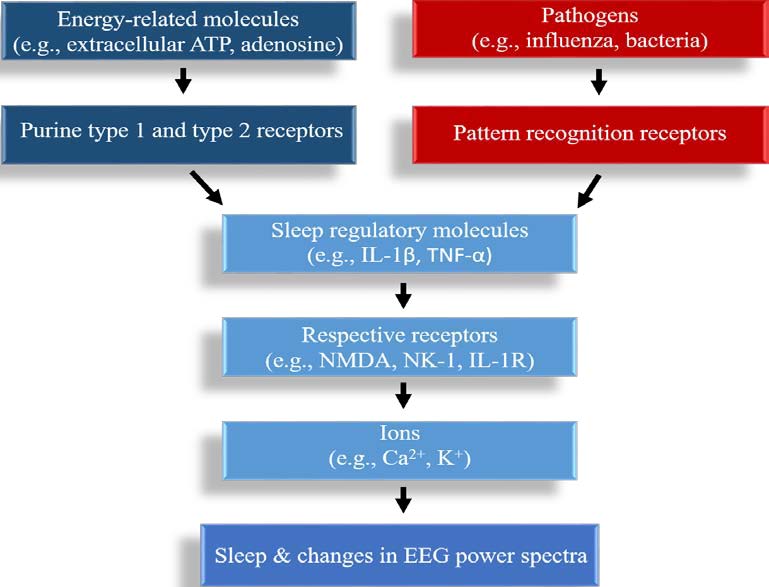
 DownLoad:
DownLoad: 